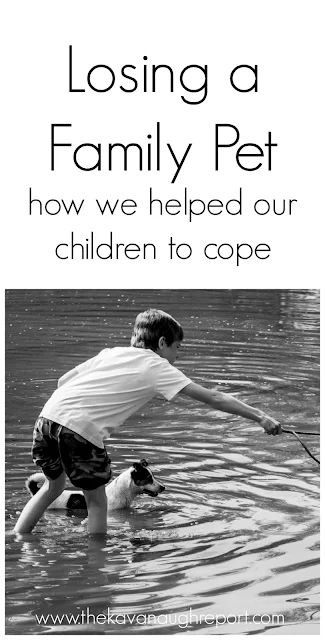Over this weekend, we had to put our nearly 17-year-old dog down. Nettie was blind, deaf, and had stopped recognizing any of us (even by smell.) Over the last week, she had stopped eating and had become increasingly lethargic. It had become clear that her overall quality of life was no longer in a good place.
Henry and Nora knew that Nettie was an old dog. We had talked to them about it many times. Henry, in particular, loved Nettie and we were clear for the last year that she could die at anytime. But this week, when it became inevitable that we would lose her, our conversation changed from the abstract to the concrete. I asked some of my lovely followers on Instagram if they had any suggestions for books we could read with the kids to help them process this change. Many great books were suggested, and of those I ordered a few:
- Lifetimes: The Beautiful Way to Explain Death to Children -- I liked this one because it wasn't specific to losing a pet, but gave a good context for why death occurs
- The Tenth Good Thing About Barney -- I liked this one because it highlighted the usefulness of death, and was a story with a boy at the center. However, it does mention Heaven in a way I was not comfortable with so I have altered the words in that spot.
- Goodbye to Goldie (Katie Woo) -- I choose this one because it's an early reader. This one was at a reading level that Henry could independently read if he wanted.
- When a Pet Dies -- If I was only going to get one book, this would be the one I got. This one does a great job explaining why pets sometimes die while addressing emotions in a straightforward and age appropriate way.
Reading these books gave both kids the opportunities to ask questions and for us to listen to their concerns. We answered as honestly as we could, and let them know when we didn't have answer to give. They have also been great at offering some ideas on how to process their emotions after the fact.
On the day that she died, there were many ways that we tried to help them through the difficult time. These included:
- Acknowledging their feelings about the day and the event. Avoiding phrases like "it's OK" or "you'll be fine." We allowed them to have their feelings and told them it was it was normal to feel sad, angry, or confused.
- We shared our own emotions. We cried with them. We were honest, and modeled how to handle our own feelings.
- We gave the children a choice in how they wanted to say goodbye -- whether with taking a picture, giving her a treat, using their words, or attempting a pet/hug. We honored their choice.
- Included them in our plans for after Nettie's death. We came up with a plan on how we would honor her life -- we will plant a new bush in her honor in our backyard -- this spring.
- Talked about Nettie all weekend (and continue to as needed). We have shared funny, silly, rotten (she was a mischievous little dog), and sweet stories about Nettie and her life. We have just allowed her to be part of the conversation, just because she is gone, she doesn't have to be gone from our lives.
- We've let the kids move on. We haven't kept bringing it up with them, but we have let them take control over when they are ready to move forward.
While I hope that no one else would ever have to lose a beloved pet, I know that cannot be reality. So, if you have an older or sick pet, I hope these resources can help you as they have helped us.
---



